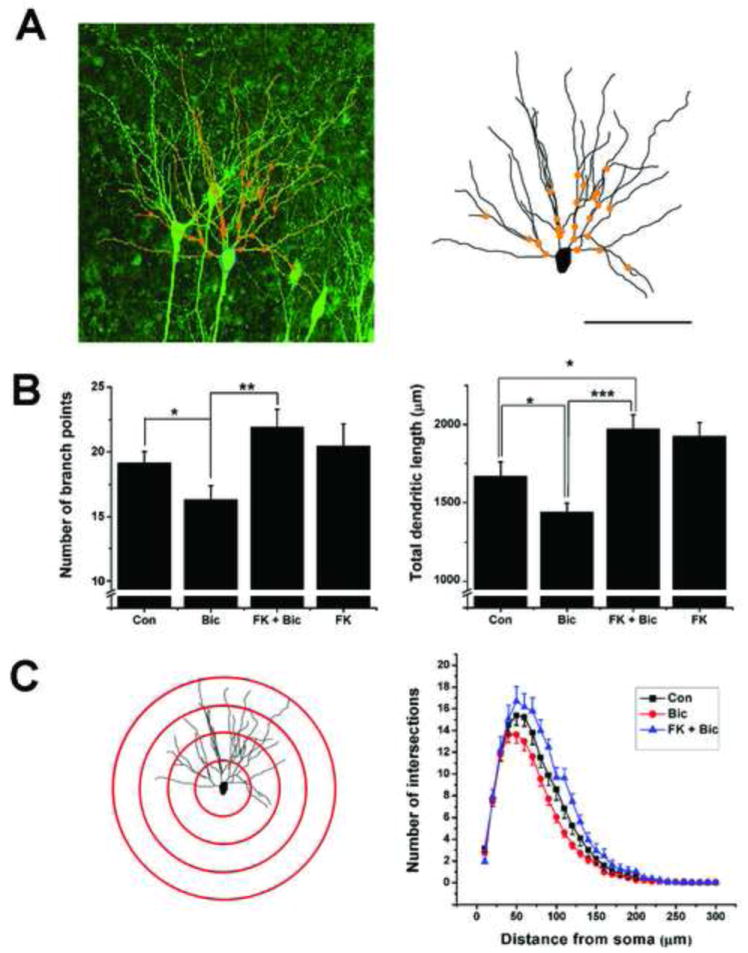Figure 3.

The calcineurin inhibitor, FK506, prevents bicuculline-induced reductions in dendritic arborization. (A) Image of CA1 hippocampal pyramidal cells in a slice culture taken from a GFP-M mouse. Superimposed on the image of one neuron is the computer reconstruction of its basilar dendrites (orange). Branch points are denoted by orange dots. For further clarity, this dendrite is shown to the right in A. (B). Bar graphs comparing basilar dendrite length and number of branch points in pyramidal cells. A 4 hour treatment with bicuculline produced a significant decrease in both branch number and dendrite length. This effect was abolished by co-treatment with FK506. FK506 alone increased dendrite length - likely reflecting calcineurin’s ability to partially suppress on-going dendrite growth. (C) Sholl analysis: left hand panel illustrates this type of analysis where the number of dendritic branches that intersect equally spaced concentric spheres were counted. In this drawing, cross sections of 4 spheres at 50μm intervals from the soma are shown. Right panel: bicuculline reduces the number of branch intersections at nearly all distances from the soma. FK506 blocks these effects of disinhibition on dendritic arbors. For clarity, data for FK506-only treatment are not plotted but did not differ from the FK+Bic plot. While bicuculline reduced both the length and number of dendrite branches, FK506 prevented these effects. * P ≤ 0.05, ** P ≤ 0.01, *** P ≤ 0.001. n=13-25. For Sholl analysis a 2-way ANOVA with posthoc Scheffe test showed: Con vs Bic: F1, 1272 = 32.2, P ≤ 0.001: Bic vs Fk + Bic: F1, 971 = 66.9, P ≤ 0.001: Con vs FK + Bic: F1, 949 = 12.1, P ≤ 0.001) Scale bar in A = 100μm.
